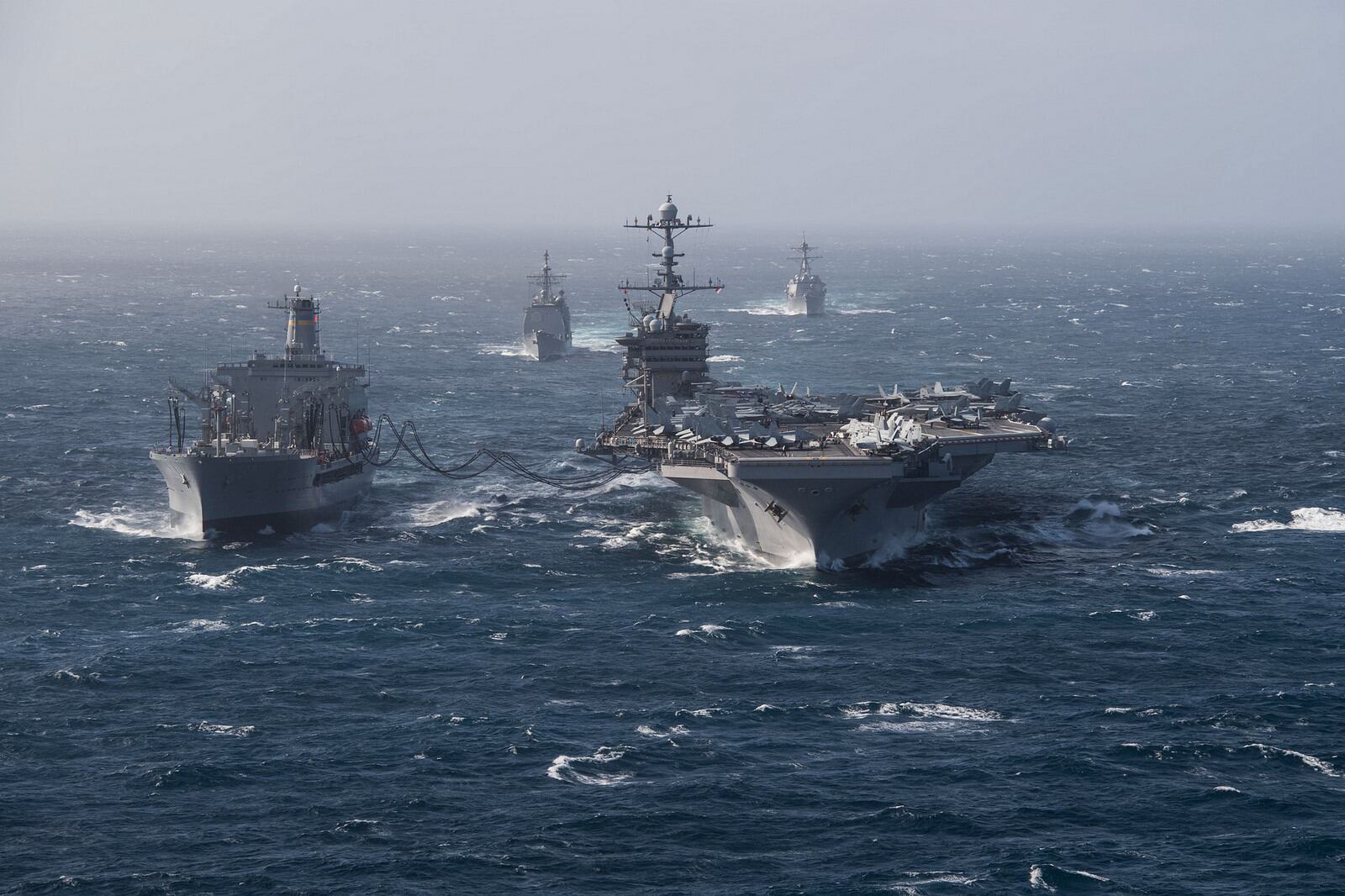“A good Navy is not a provocation to war. It is the surest guaranty of peace.”
Those words were true in 1902 when Theodore Roosevelt spoke them and are even more true today.
At the time, however, Roosevelt’s words were more prophetic than based in present reality. America’s Navy back then was strong, but far from the world’s mightiest.
Just over a decade later, the Great War would engulf the world, claiming the lives of more than 116,000 Americans, including Roosevelt’s youngest son.

World War I was a wake-up call to Congress and military leaders: If the United States was to ensure victory in future global conflicts, a more expansive, powerful and modern Navy was necessary.
Congressman Carl Vinson, chairman of the House Committee on Naval Affairs, took up the arduous task of convincing colleagues to back an expensive Navy expansion, facing significant political opposition along the way.
Congress passed Vinson’s “Two-Ocean Navy Act” in 1940 to increase American naval capabilities in the Atlantic and Pacific Oceans, should the United States become involved in a global conflict that threatened to consume the nation.
In the following year, the Japanese attacked Pearl Harbor.
Vinson’s blueprint to American naval superiority is a key road map for our future naval challenges. He demanded a U.S. Navy “second to none,” and his leadership paved the way forward.
The Two-Ocean Navy Act increased the size of the naval fleet by 70 percent, establishing the most formidable maritime force in the world.
Today, the Navy is recovering from years of dwindling funding and its ships are aging. The Navy needs an equally bold and prescient strategy if we are to deter emerging threats around the globe.
Passing the Two-Ocean Navy Act changed the outlay of U.S. forces around the world. Following Pearl Harbor, the United States was immediately faced with a war on two fronts that demanded the kind of naval presence and superiority provided by the Two-Ocean Navy Act.
Unlike a generation earlier, America’s Atlantic and Pacific fleets were robust — buttressed by an industrial base primed to churn out whatever armaments were needed to wage a long war. By the end of the global conflict, the U.S. Navy had supplanted Britain’s Royal Navy as the largest and most lethal maritime force on the planet.
So why the complacency today? China and Russia continue to occupy or threaten to seize significant swaths of territory around the world. We watch as terrorists throughout the Mediterranean, Persian Gulf, Latin America and elsewhere proliferate. A strong Navy is absolutely critical to the future of our security and that of our allies.
While I was encouraged to hear the president’s promises during his campaign to ramp up our maritime capability, our Navy’s current plan to adequately address a new era of great power competition is lacking.
That’s why I have proposed a new plan, inspired by our past success, to significantly upgrade the Navy’s current goal of a 355-ship Navy fleet over the next 30 years.
It’s called the “Five-Ocean Navy Strategy.” It calls for a fleet of more than 400 ships, equipped with the latest technology to maximize our Navy’s offensive and defensive technological capabilities.

As the Navy reconsiders its commitment to the 355-ship plan, the U.S. is desperately in need of voices to support a strong Navy and it is now up to Congress to act. Although America never wants to fight if peace can be preserved, we must stand ready to counter 21st century geopolitical foes who threaten our nation or our allies — and that begins with having a Navy for the 21st century.
Increasing the size of the fleet will help the U.S. Navy match growing forces of our Russian, Chinese and Iranian rivals. It also will safeguard free passage in contested waterways, such as the South China Sea, Suez Canal, Arctic Ocean and Persian Gulf.
As foreign policy and defense officials note, however, maritime superiority neither begins nor ends on the ocean’s waves. That’s why the Five-Ocean Navy Strategy also prioritizes American submarine capabilities and threat-detection technologies.
These investments will not only improve security but upgrade one of the most important planks of our aging nuclear triad.
RELATED

Make no mistake, this will be a costly endeavor, certainly at first. Unlike during the Second World War, today’s American industrial base isn’t equipped to handle such a large project.
That’s why our government must act boldly and swiftly to invest in American maritime capabilities. Adversaries, hungry to reduce the power of the American nation abroad, will not stand around and wait.
The Five-Ocean Navy Strategy builds on past American maritime successes and wise leadership, such as that embodied by Carl Vinson, to chart a course to deter future threats.
The president and Congress, elected to protect and defend the American people, must provide for the common defense by making the upgrades necessary to protect our interests abroad and preserve our freedoms at home.
As President Ronald Reagan reminds us, “Freedom is never more than one generation away from extinction.”
By the wisdom of American leaders and by the grace of God, our Navy will remain the greatest force for good on Earth, and the freedom and liberty she represents will continue to light the world for generations to come.

U.S. Rep. Jim Banks, an Indiana Republican, served in Afghanistan as a Navy Reserve supply corps officer in 2014 and 2015. The conservative lawmaker entered Congress on Jan. 3, 2017, and serves today on the House Armed Services, Veterans Affairs and Education and Labor Committees. His military decorations include the Defense Meritorious Service Medal. His views do not necessarily represent those of Navy Times or its staffers.





